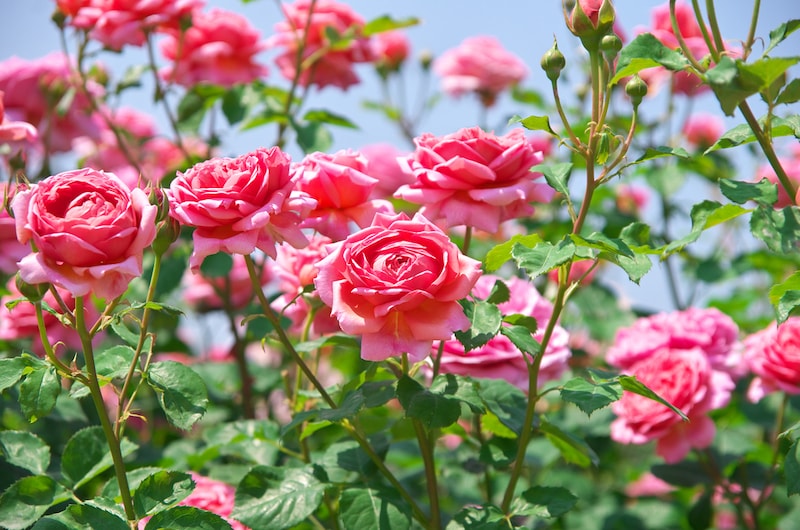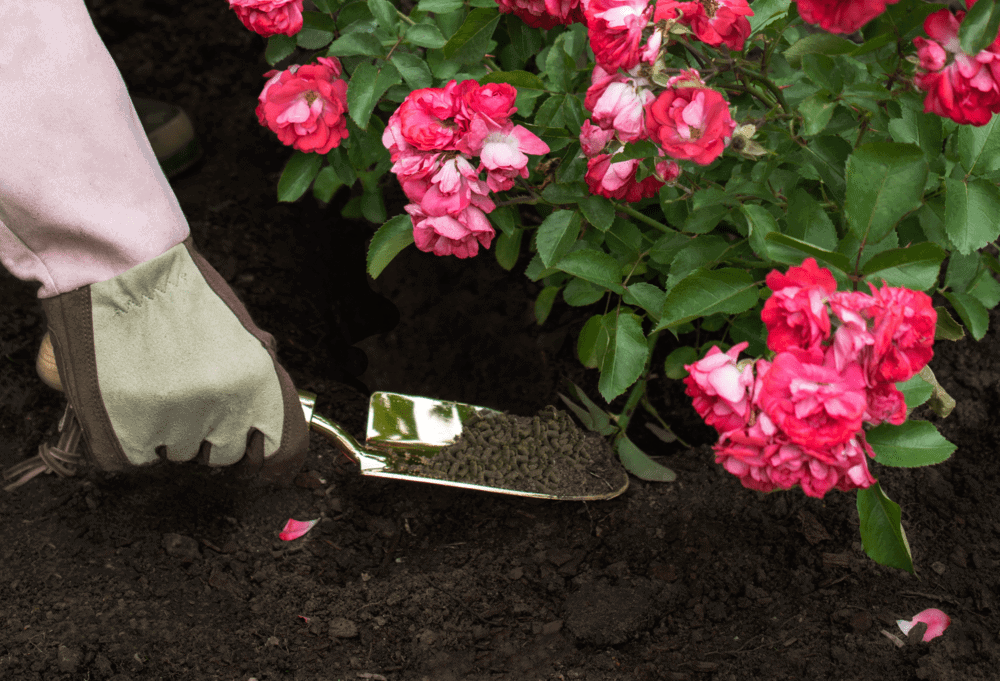Guide rose Care Techniques – The Basics
Guide rose Care Techniques – The Basics

Rose is considered the queen of flowers. With different large and small flowers, diverse colors and gentle fragrance, roses have always been the most popular from the past to present. Although, growing and caring for this flower is a bit complicated, but this flower queen is well worth our time. Also learn techniques to care for rose plants through the following article.
Information about the rose plant
Scientific name: Roses
Family: Roses ( Rosaceae )
Genus Rosa
Description: Rose plants have 2 groups: erect or climbing, often with thorns. Bush rose up to 80 cm in height. Rosewood up to 2m tall, with single stem. Meanwhile, climbing roses have unlimited height depending on the height of the truss. Normally, the climbing rig will have a height of 3.5m to 4m. The classic, cut rose variety often had fewer petals than today's hybrid rose species.
The characteristic of rose is its mild fragrance. Rose petals are usually thin, soft and easily crushed. In addition to bringing aesthetic beauty, roses also have many useful effects in beauty and especially used as perfume.
The delicate combination of ornamental plants and roses will bring your garden to life. But if planted individually, each type still creates a highlight for the garden.
Techniques for taking care of rose plants
In order for roses to bloom and be healthy, it is necessary to have proper planting and care techniques. Just watering and fertilizing is not enough, we need to consider many other factors.
Location
All roses love the sun, growing hardy in sunny, windy, and well-ventilated locations. Areas that are not well ventilated or too densely planted should be avoided. This easily causes many diseases to the plant. Roses need a lot of sun, so don't plant them under the canopy of large trees.

Soil conditions for growing roses
Roses grow well in varieties with high humus content, rich in nutrients, with good moisture retention and drainage. If growing in a pot, make sure the pot has a drainage hole. As for planting directly in the ground, it is necessary to regularly check the drainage capacity and improve the soil if necessary.
Dig a hole about 40cm wide and fill it with water. If the water still hasn't receded after two hours, consider raising the bed high or choosing another location. Poor drainage environment easily causes waterlogging, root rot or fungal diseases. To increase ventilation and drainage, mix garden soil with 50% organic compost and peat moss. This light soil mix encourages the growth of feeder roots that feed the plants.
For the most convenience, you can choose to buy quality pre-mixed persimmon soil for growing plants! Limit the reuse of old soil of old rose pots. Old soil often contains many pathogens that can damage plants as well as lack of nutrients for plant growth.
See more:
5 important factors of good rose soil
Steps to plant roses
Roses are grown with bare roots and seedlings. The best time to plant is from October to early December. When planted in the fall, the plants grow better and flower 2-3 weeks earlier. Seedlings can be planted all year round.
Prepare to breed
Before planting, bare roots are placed in a bucket of water for about 8 hours. They should be submerged in water up to the grafting site. When planted in the spring, they should be planted in water for about 24 hours. Crops also grow better after soaking. Place the plant in the water until no air bubbles emerge. Then, the dead and damaged root parts are removed and the remaining root tips are pruned. Doing so stimulates the growth of new roots.
For rose seedlings, the dead and damaged stem is simply removed. Prune away yellowed or bruised leaves during transportation. And then plant it.
Planting a rose tree
Before planting, it is necessary to dig a planting hole a little bigger and deeper than the pot:Remove rocks and larger weeds.
Dig the whole plant about 40 cm deep and wide.
Mix the excavated soil with peat, humus or rose manure.
To make the soil more aerated, mix some gravel.
Do not add fertilizer or fertilize, this can burn the roots.
When planting, the grafting site should be placed 5 cm below the soil surface.
Fill with soil.
Move the tree gently back and forth so that it is in a balanced position. Leave no space below.
Compact the soil carefully and water regularly.
When planting, ensure proper planting distance as roses have weak competition. The recommended spacing is 40-50 cm for small bush roses, 100-150 cm for climbing roses and 60 cm for single woody rosettes. After successful planting, it is necessary to know the technique of taking care of the rose plant so that the plant grows well and produces many flowers.
Cut
Prune roses in the middle of the blooming season to stimulate the plants to bloom more roses

First, find out if the variety of rose you're growing blooms multiple times in a season or just once. If the multi-flowered variety blooms many times during the season, you can prune to encourage more flowering.
When the roses are finished blooming, they will gradually drop their petals and form buds containing seeds. This is a sign that the blooming season is over.
Pruning, or removing old flowers, will help the plant continue to flower instead of producing seeds. Before cutting and between each cut, it is necessary to clean the pliers with alcohol to avoid spreading the disease from one plant to another. From the flower count down to the first cluster of 5 leaves, cut at a 45 degree angle. This cutting method helps the rose plant to produce more flowers and come out significantly faster.
Prune roses at the end of the blooming season to keep the plant healthy
Many varieties of roses, such as climbing and antique roses, only bloom once a season. Therefore, pruning old flowers does not help the plant continue to flower.
But pruning is essential for this plant. The best time to prune is after the plant has faded. It is necessary to remove old flowers, dead branches, toothpicks, and hidden branches so that the tree does not take much effort to raise cotton. Pruning helps the plant conserve nutrients to produce new shoots, preparing for the next flowering season.
The branches will be cut back from 2-5 eyes depending on each old or young branch that is pruned appropriately. Older branches need more pruning than younger branches. For branches that are too old or barren, no longer able to sleep or have the ability to shoot, need to cut close to the base.
Water the roses
Especially, for young and newly planted roses on hot days, water is a very important factor. Because, the root system of the plant is damaged and the plant loses water during planting. Water the soil but do not water the leaves and note that it should not be watered at night to limit fungal growth.
Plants need more water in the hot season than in the cool season. It is necessary to reduce the amount of water gradually when preparing to change the season from hot to cold. The plant will adapt gradually and not be shocked.

Fertilize roses
Fertilizer is an indispensable element for any plant species. Roses are a plant that needs a lot of nutrients, so fertilizing needs to be adequate and reasonable. How to fertilize potted roses about once a month with different fertilizers. However, roses are very fond of organic fertilizers such as: vermicompost , cow dung, bat manure , goat manure , ... Using homemade organic fertilizers from kitchen waste or banana juice are all like fit. The use of organic fertilizers both saves costs and takes advantage of waste sources, contributing to environmental protection.
Prevention of pests and diseases on rose plants
For insect pests
When meeting favorable environmental conditions, insects often develop and cause serious damage to plants in a short time. They often eat leaves, suck or act as vectors for viral diseases. Therefore, it is necessary to take preventive measures such as:Clear out weeds, destroy their habitat
Monitor and adjust the appropriate amount of water to avoid getting wet
Plant more flowers that attract natural enemies that cause diseases for harmful insects such as marigolds and chrysanthemums
For diseases on rose plants
Rose plants often suffer from many diseases: leaf spot, powdery mildew, downy mildew, bacterial diseases, scarab, etc. Roses are very susceptible to diseases when facing adverse weather conditions. It is very important to prevent disease in the first place.Use varieties of clear origin, resistant varieties
Balanced and reasonable fertilization
Watering should be done in the morning to prevent fungal spores from growing
Nhận xét
Đăng nhận xét